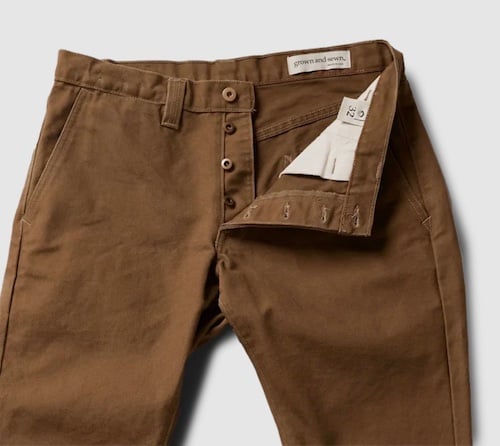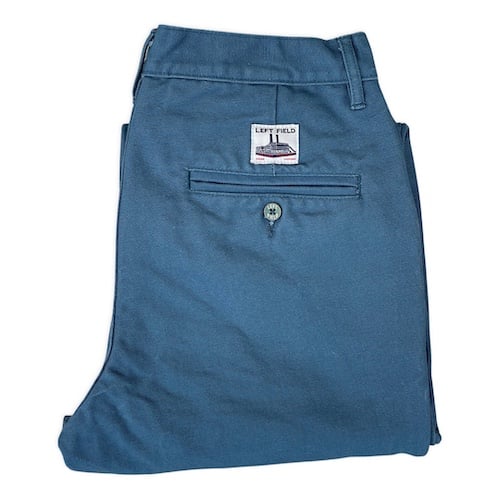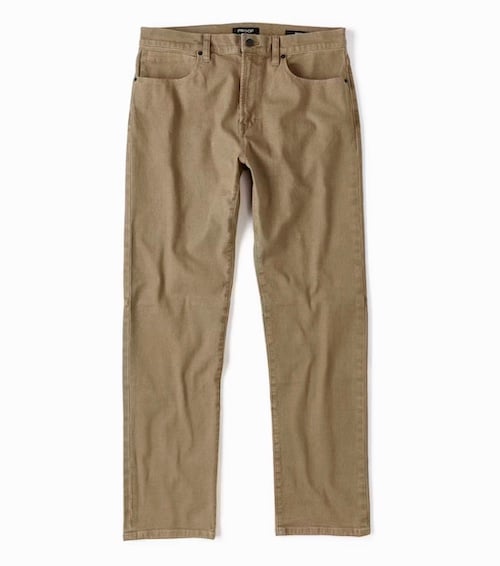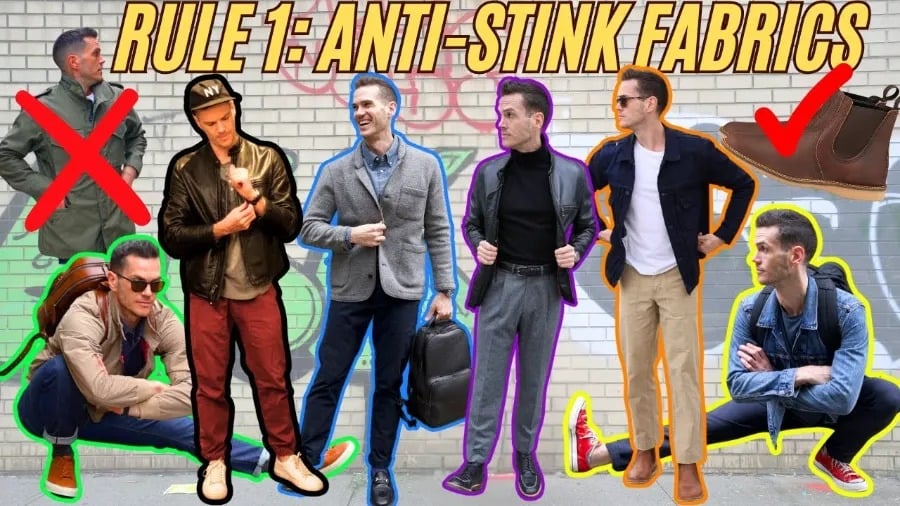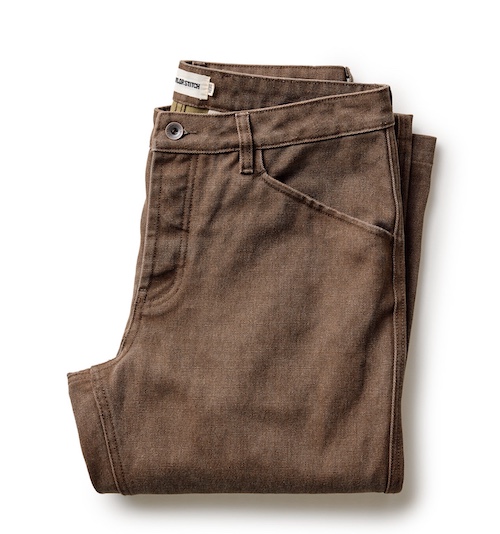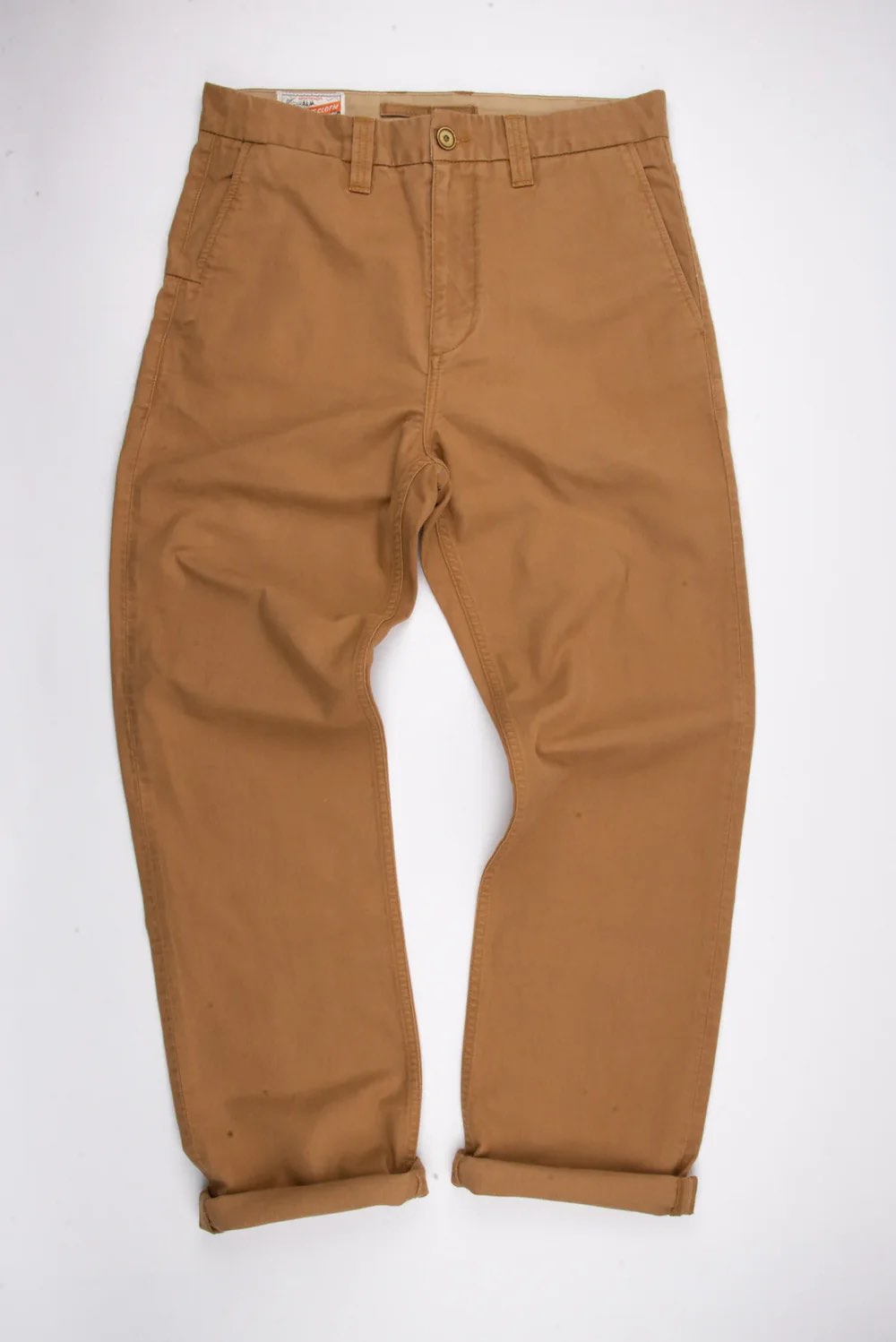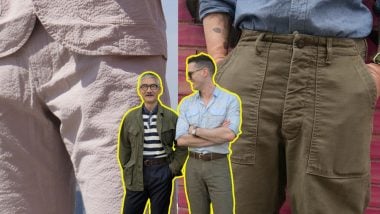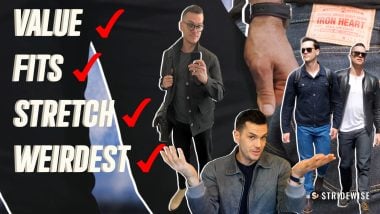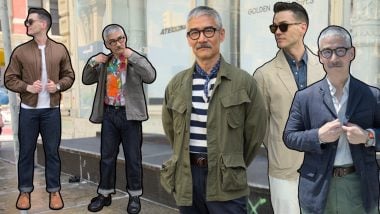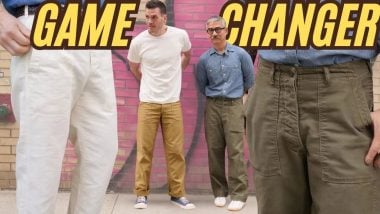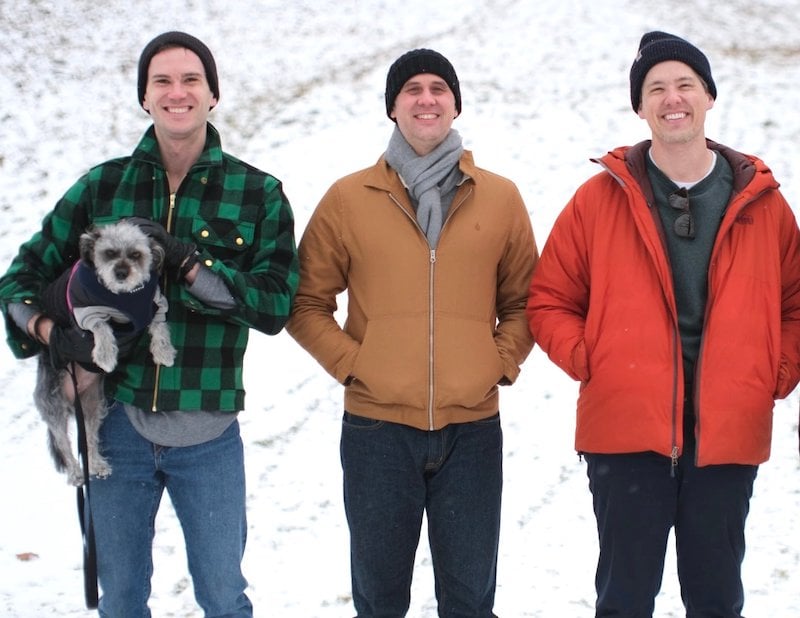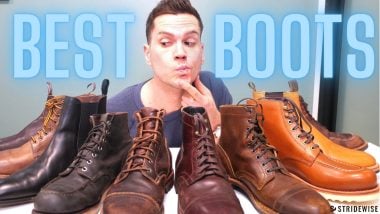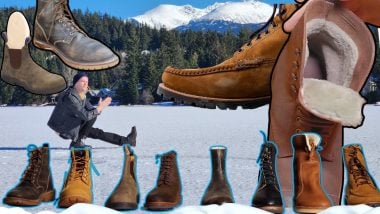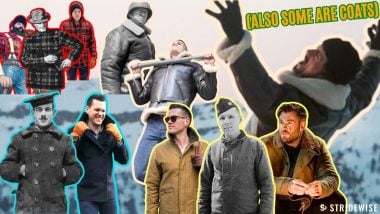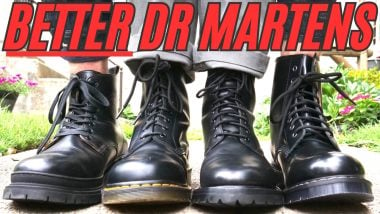The 5 Best Casual Canvas Pants and Why They Suck
Jeans started out as workwear, but the way they so effectively balance durability and comfort has led them to become the default casual pants: if you go out in public, chances are that most people you see will be wearing jeans.
There’s absolutely no other item of clothing as widespread as jeans, but there’s actually one alternative — just one — that offers the same mix of casual and durable. It’s the jeans’ predecessor: canvas pants.
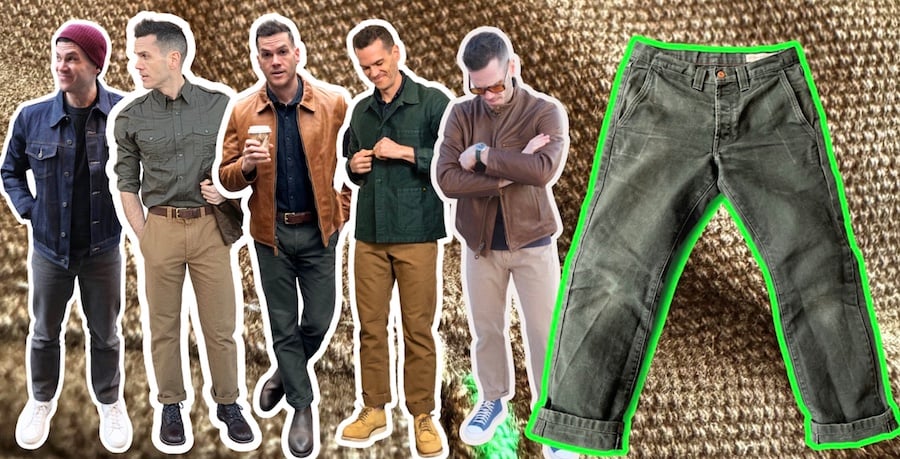
This article isn’t about work pants for manual laborers. It’s about the brands that are bravely making casual, everyday canvas pants that you can wear with your usual sneakers and t-shirt on the weekends. The brands that understand that most people wear jeans every time they leave the house and they might want an alternative.
Canvas pants are the only real alternative to jeans, and it’s criminal that they aren’t more widespread — even though there are good reasons they’re so much less popular than jeans.
In this article, I’m going to cover why canvas pants suck, why I like them anyway, and my favorite bands that include stretchy canvas for travel, canvas that fades like denim, and the thickest and stiffest canvas I’ve found.
The 3 Main Kinds of Fabric Weaves
- Plain weaves (eg. canvas)
- Twill weaves (eg. denim)
- Satin weaves (eg. sateen)
There are three main kinds of fabric weaves: Satin (an uncommon and breathable pick that I explored in my fatigues article), and two more widespread ones: twill weaves (like denim and chino cloth), and plain weaves like canvas.
When you look closely, it’s easy to tell them apart: the surface of twill looks like a bunch of diagonal lines running parallel, while plain weaves like canvas have a more crosshatched look. (Sateen looks kind of like twill if it had an extra layer of horizontal lines floating on its surface.)
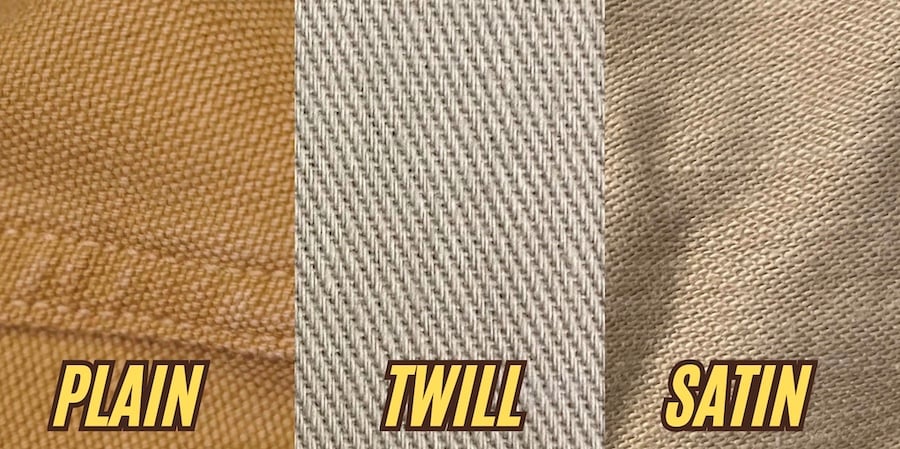
All three are tough and longlasting, but even when they’re all woven from the same fabric (we’re mostly talking about cotton in this piece), they give you very different experiences when you wear them.
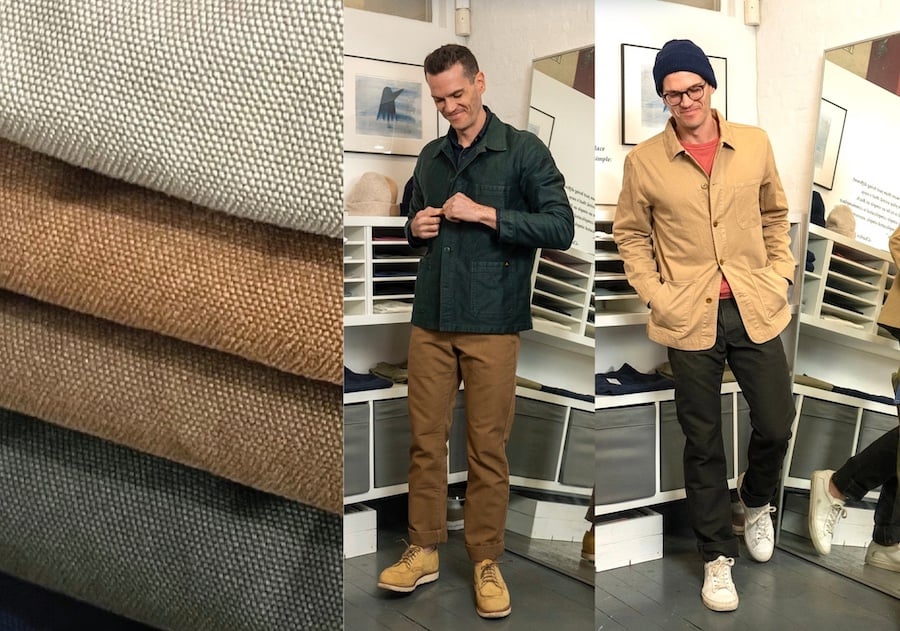
Jeans vs Canvas Pants
- Twill is more comfortable than canvas, which is less breathable and more rigid
- But canvas pants remain the only real alternative to jeans as far as balancing casual and durable
Canvas pants are sort of the original jeans: before jeans were patented and popularized in the late 19th century, Americans did wear twill, but they were much more likely to wear canvas for manual labor than they are today. (I’m talking about duck canvas here, which is a nebulous term given to the kind of dense and tough canvas used for workwear.)
Jeans got so popular that they escaped the jobsite: every big fashion house has their own take on the denim jean, while canvas pants didn’t really leave the workwear arena: the most popular brands selling canvas pants today are indeed dedicated workwear-and-I-don’t-mean-fashion-workwear brands like Carhartt and Dickies.
But if we accept that jeans can evolve from workwear to casual wear, then canvas pants deserve the same respect.
Canvas vs Denim: Why Canvas Kind of Sucks
I did a whole article with the Dutch brand Benzak Denim Developers comparing denim and canvas, so if you’re really interested in learning about the differences, I invite you to check it out or watch the video above. But here’s the long and short of it:
Benefits
- Canvas is very tough and long-lasting.
- Canvas complements denim well; it’s a great pant for a denim jacket, and the fabric’s uniformity can be a nice way to offset the more dynamic and mottled look of denim.
- Canvas ages more slowly than denim: Unless it’s indigo dyed canvas, you’ll find that canvas takes longer to look old and worn in.
- Canvas stretches out less than denim: the fit stays more consistent, making it easier to find your size.

Drawbacks
Canvas is very rigid and densely woven, which means that although it performs better than most synthetic fabrics in the areas I describe below, the fact remains that…
- Canvas breathes less than denim (and denim isn’t all that breathable to begin with).
- Canvas doesn’t soften and become more comfortable over time, the way denim does.
- Canvas doesn’t mold to the shape of your body like twill weaves do: it’s more rigid and doesn’t drape as nicely.
- Canvas has less give to it than denim: it fights you more when you sit or squat.
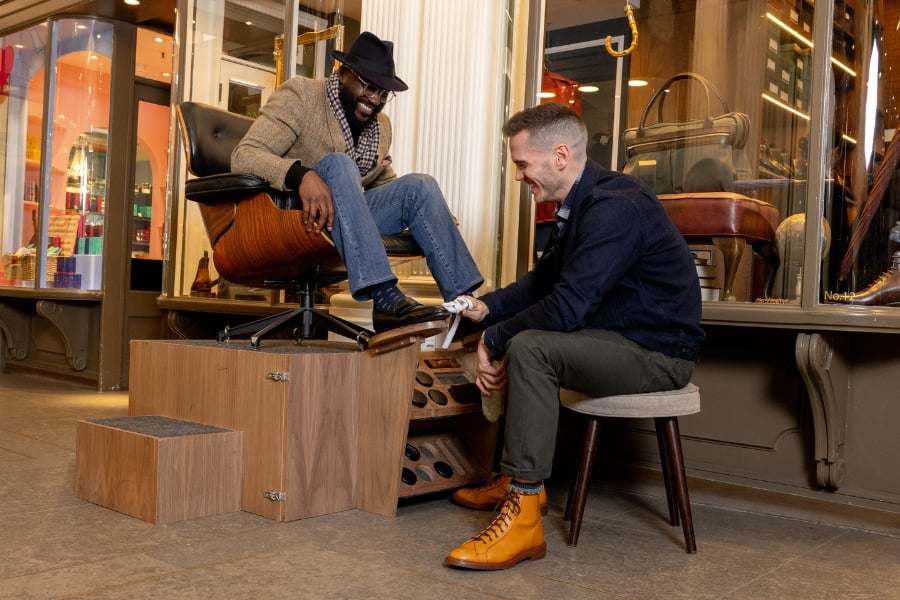
To sum up, when compared to twill-like denim, canvas has similar durability but without the same comfort.
Still, canvas pants are nice to have. They last forever, look great with a denim jacket, add variety to your wardrobe, and above all: they’re the only type of pants that’s the exact same kind of casual and durable as jeans. There’s literally just one alternative to jeans, and it’s canvas pants.
So here are my favorite canvas pants that are made with fit and style in mind; in other words, canvas pants that won’t make you feel like you’re stealing anyone’s blue-collar valor.
My Favorite Canvas Pants Brands
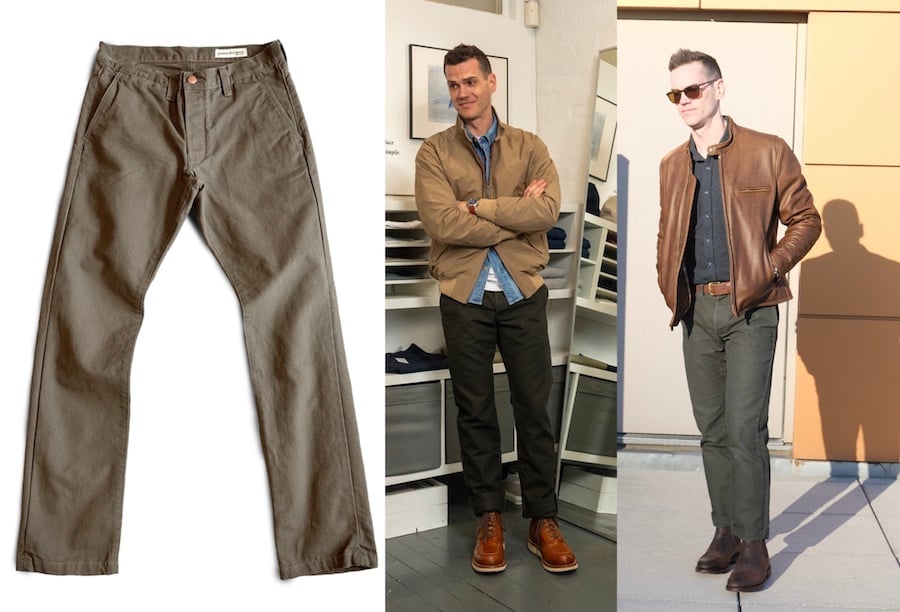
1. Grown and Sewn’s Foundation
- Pro: Heavy canvas in a straight leg fit that’s made in America and fades with wear like jeans
- Con: I’d prefer a higher rise on their pants
First, it would be insane if I didn’t make a big deal about Grown and Sewn. They’re the only casual menswear company I’ve seen that deliberately made canvas the cornerstone of their brand: they sell zero jeans, and I even have a canvas baseball cap from them.
They’re a tiny, Brooklyn-based brand completely opposed to the idea of “fashion.” Whenever I talk to them, they refuse to use the f-word, insisting they’re just about making quality basics that fit into anyone’s wardrobe — and they’re committed to only selling products made in the United States.
Made with thick 12 oz canvas, these traditional workwear trousers have a modern fit and a pigment that lets it fade like denim.
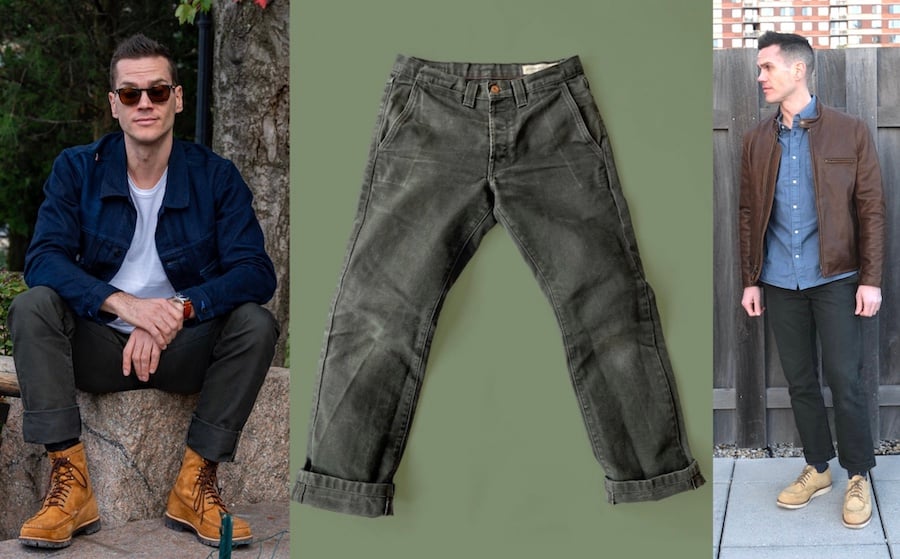
Fabric weight works differently between denim and canvas: your typical jeans are 11 to 12 ounces per square yard, while typical canvas pants are about 8 to 9 ounces. So at 12 ounces, Grown and Sewn’s flagship Foundation pants are considered pretty heavyweight for canvas.
The Foundation comes in just one straight-leg fit with a slight taper, which they consider the most timeless cut possible. They also have a double-knee carpenter style called the Union.
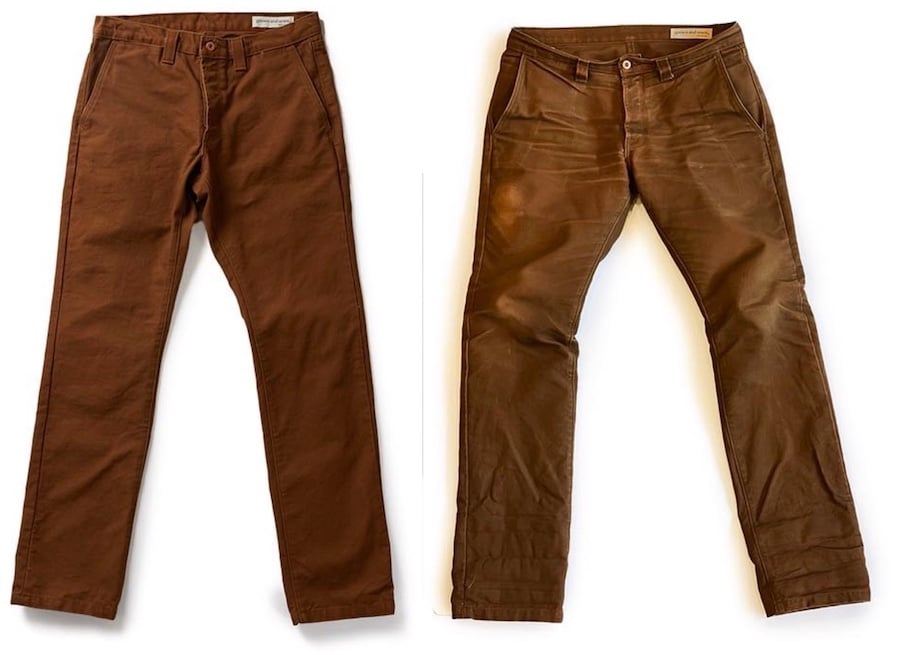
It’s thick canvas and they’re made in the USA, but the coolest part is the Foundation pants fade like denim: by adding a pigment over the dye, the color chips away like indigo does and produces whiskers and honeycombs like your favorite jeans.
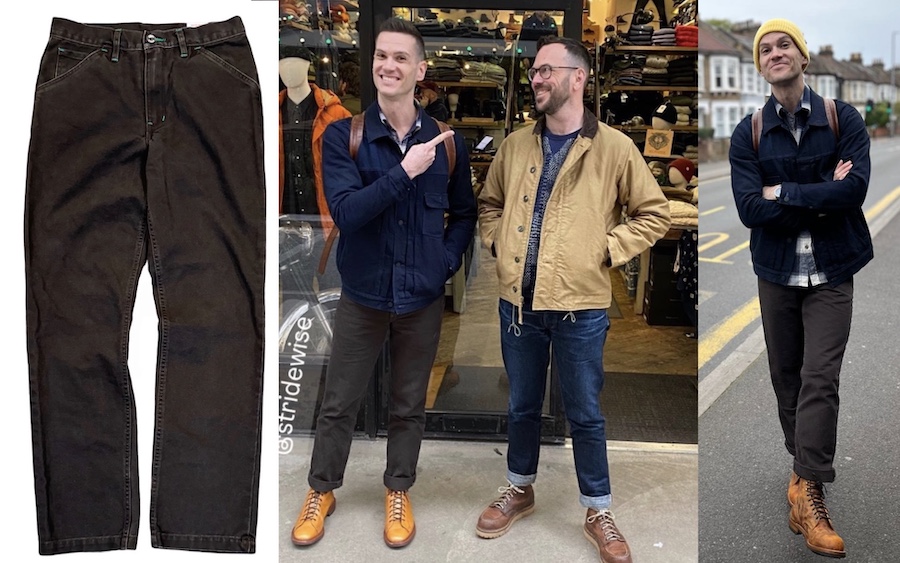
2. Left Field NYC’s Duck Chino
- Pro: Roomy cut, heavyweight, can double as work pants, made in USA
- Con: Bright green stitching makes them less versatile
Another pair I’ve worn a lot is Left Field NYC’s Duck Chinos, another small independent brand in New York City that makes everything in the United States. They’re based in Queens (not far from my apartment), but they recently opened stores in Los Angeles and downtown Manhattan. I’ve worn them in a few videos on my YouTube channel, including a trip to Left Field’s store and the time I visited a leather bag workshop in Southern France.
Like a lot of brands in this niche, they offer two styles: one with reinforced knees and one that looks more like basic chinos: the Work Uniform Chino, which is the one I own.
Heavy, USA-made, 100% cotton canvas that's pre-washed for a broken in feel and cut with a relaxed straight leg that fits any footwear.
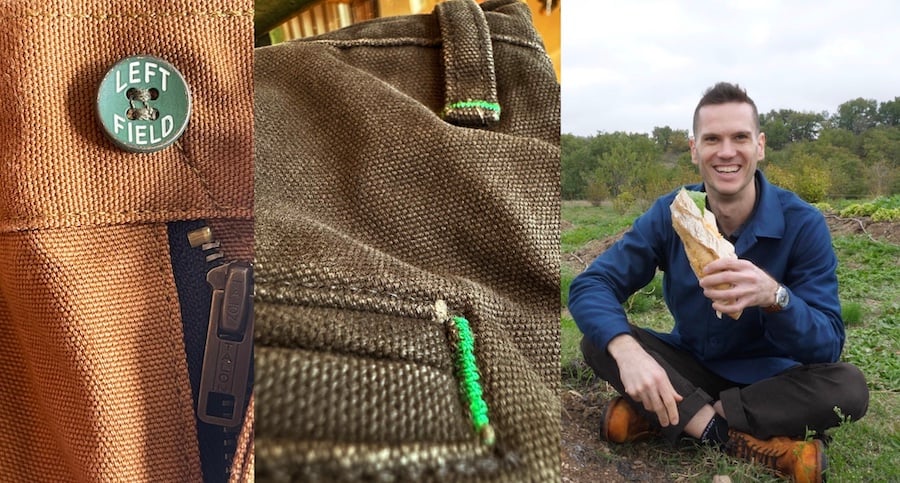
Their canvas is a little heavier at 13 ounces, and Mount Vernon Mills makes it in Georgia, a facility that’s been making canvas for nearly two hundred years.
Differences compared to Grown and Sewn:
- Left Field’s canvas is washed, so it feels softer and more broken-in when new.
- Their fit is slightly different: still straight leg, but with a higher rise and wider leg opening.
- They often add bright green stitching, giving them a more playful, casual vibe.
I’d say Grown and Sewn’s pants are more subtle and slim, while Grown and Sewn’s Duck Chinos are more casual and work-ready.
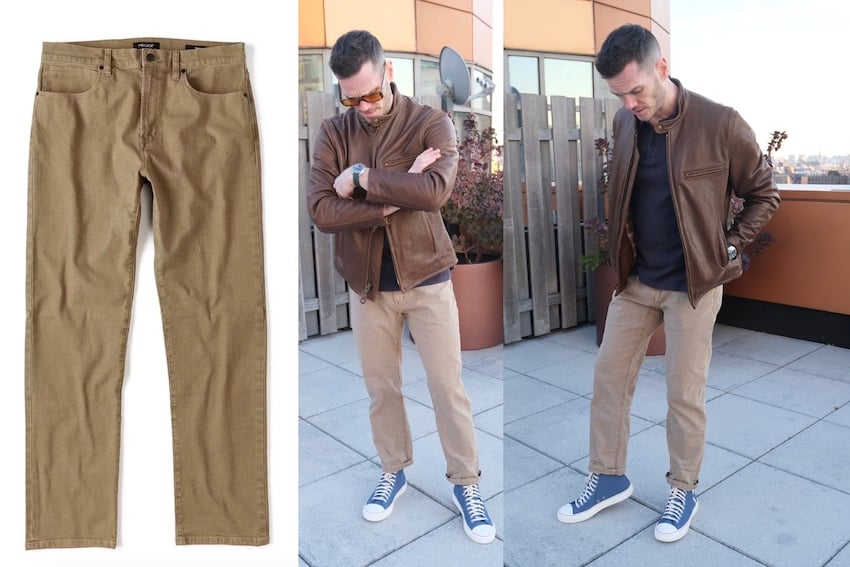
3. Proof’s Rover Line
- Pro: Inexpensive and available in more fits, inseam lengths, and styles than any other brand I’ve seen
- Con: Made with Lycra and polyester, they’re less substantial (but more comfy) than other brands
One issue with casual canvas pants is that they’re so rare, you almost never see multiple fits or inseams. That’s why I’m highlighting the Rover line from Proof, an in-house brand from Huckberry.
They’re the least expensive on this list, partly because they’re not made in the USA, but mostly because they’re not 100% cotton: they’re made of stretch canvas.
Lightweight, inexpensive, and made with a Lycra infused canvas that stretches like sweatpants, these are canvas pants made for performance and adventure.
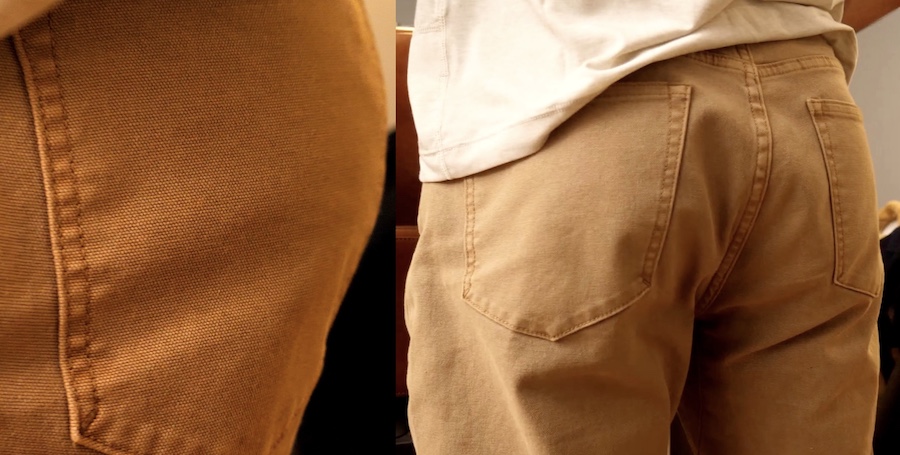
The fabric is 2% Lycra and 25% recycled polyester, making it both comfortable and relatively sustainable (since recycled polyester is better than virgin petrochemical fibers, but I digress).
Other highlights:
- Three inseam options.
- A gusseted crotch for mobility.
- Stretch comfort without looking like shiny technical pants.
- Three models to choose from: 5-pocket, double knee, and “EDC” with extra pockets.
Designed for dynamic outdoor wear (all their models are hiking), I wear these a lot when traveling because they’re stretchy, because they don’t look like they’re synthetic, and because I like to travel in a denim jacket (and canvas looks great with denim).
Further Reading
10 Rules for Better Travel Outfits
I travel way more than I’d like to, but it means I’ve learned how to do so in comfort. Learn more →
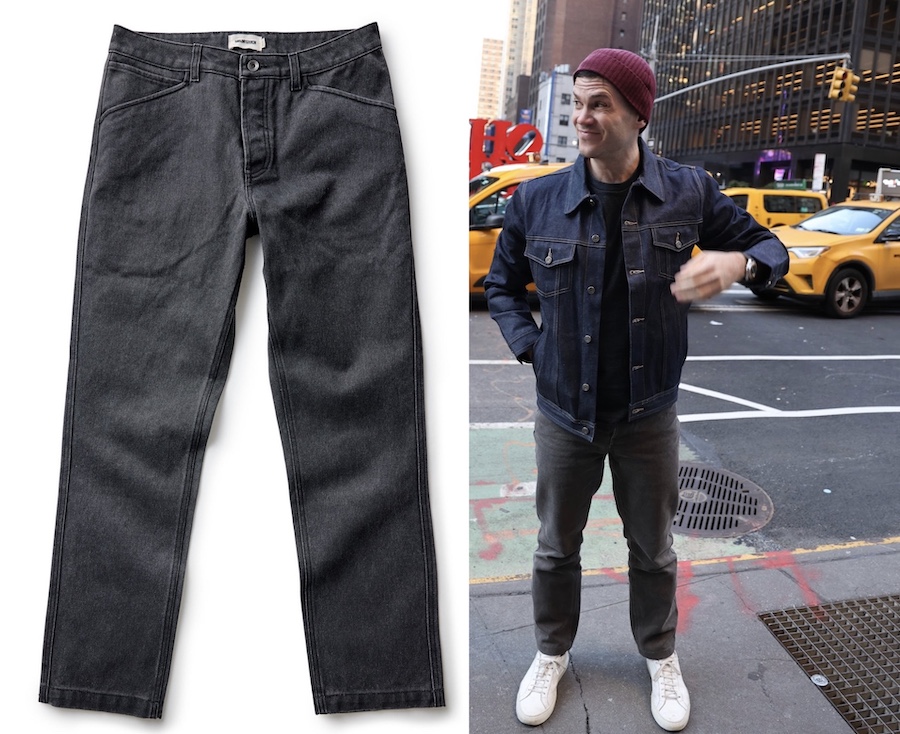
4. Taylor Stitch’s Chipped Canvas Line
- Pro: Inexpensive, made with organic cotton, pre-distressed for a worn-in look.
- Con: Pre-washed and made-in-China might decrease their appeal.
Taylor Stitch is another brand that’s been spreading the gospel of canvas for years. I’ve owned several pairs, but they’ve discontinued most of them, most notably the “Boss Duck” — a hemp-blend stretch canvas that was once a cornerstone of the brand.
Now, their focus is Chipped Canvas: a thick, 100% cotton fabric used for their Chore Pant (double-knee) and Camp Pant (cleaner silhouette), plus a few jackets.
Canvas that's unusually thick, certified organic, 100% cotton, and stonewashed for a pre worn look and feel.
What makes Chipped Canvas special is the price (thanks, made in China), that it’s organic cotton, and above all, its pre-distressed look. The fabric is dyed, topped with pigment, and then stone-washed so that the top layer chips away and makes for a worn-in appearance. (I learned all about these processes on this trip to a jeans-fading factory.)
Some sustainability-minded folks dislike pre-washing, but the carbon footprint is improved by using Global Organic Textile Standard-certified organic cotton. And at 12.5 ounces, Chipped Canvas is unusually thick and long-lasting.
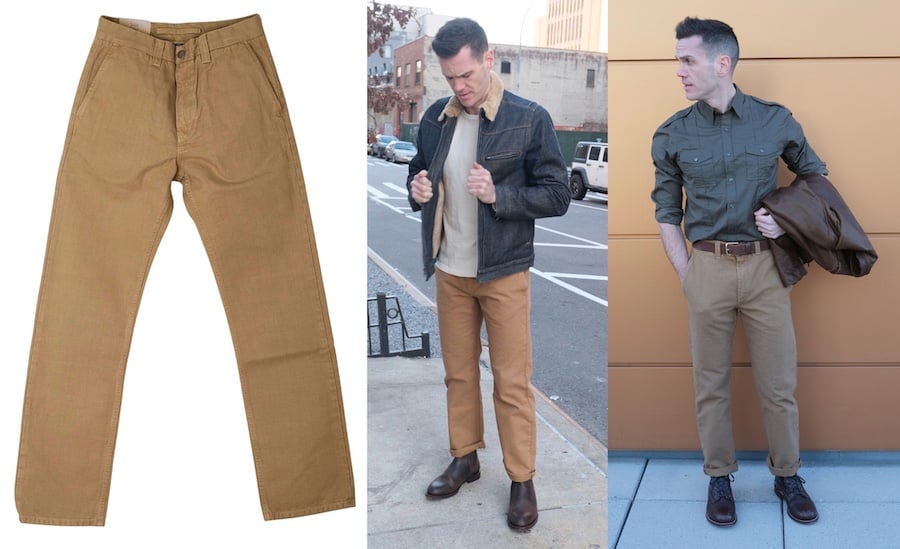
5. Freenote Cloth Worker’s Chino
- Pro: Ultra thick at 14 ounces, made in the USA from an unusually textured Japanese canvas
- Con: At $300, the price matches the quality
Finally, the heavyweight champion: Freenote Cloth’s Deck Pant, made in the USA from an unusually heavy, 14-ounce canvas that’s more textured than you usually get with canvas. Remember that fabric weight works differently with canvas: these 14-ounce pants feel more like 18-ounce jeans.
I bought them partly because I love heavy fabrics, but also because I needed pants worthy of pairing with the world’s warmest denim jacket, which also happens to be from Freenote: the RJ-2, a 21-ounce shearling-lined monster that I discuss in my list of the warmest winter jackets.
The most remarkable canvas pants in the USA are made with 14-ounce fabric with a slubby texture that gives it depth and beauty comparable to its toughness.
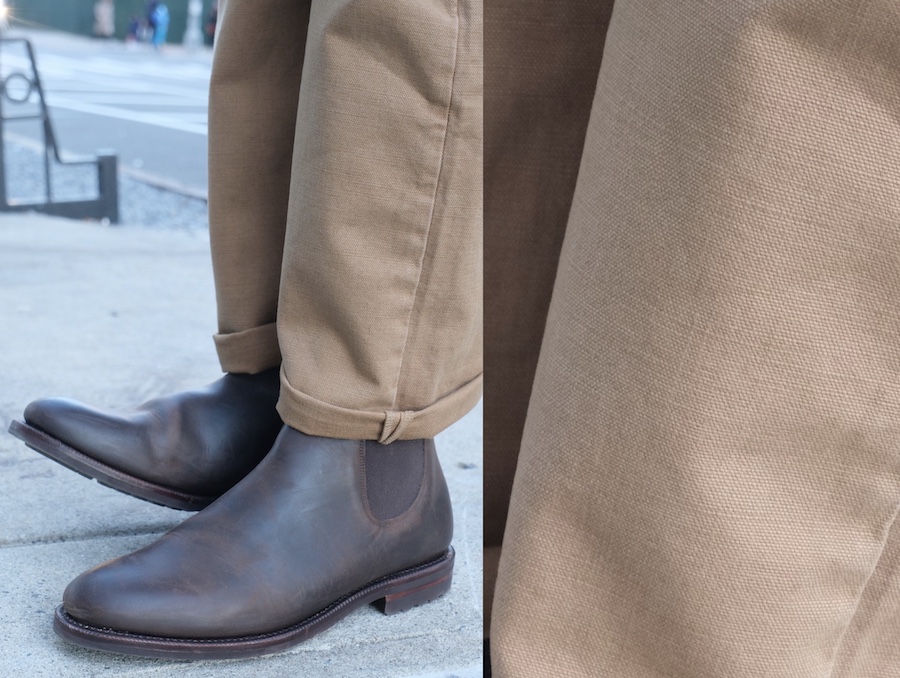
The Deck Pant has a roomy fit with a high rise, but you can also get this fabric on their slimmer Worker’s Chino if you prefer. The Deck pants fit taught me an important lesson: many of the complaints about canvas’s comfort can be solved by just getting looser-fitting pants.
I had the Deck Pants altered after losing weight and took the waist in too much, and now they don’t fit, but they remain the best heavyweight canvas pants I’ve owned. They tick all the boxes that guys who like high-quality casual wear like: American-made, Japanese fabric, and a small, independent brand.
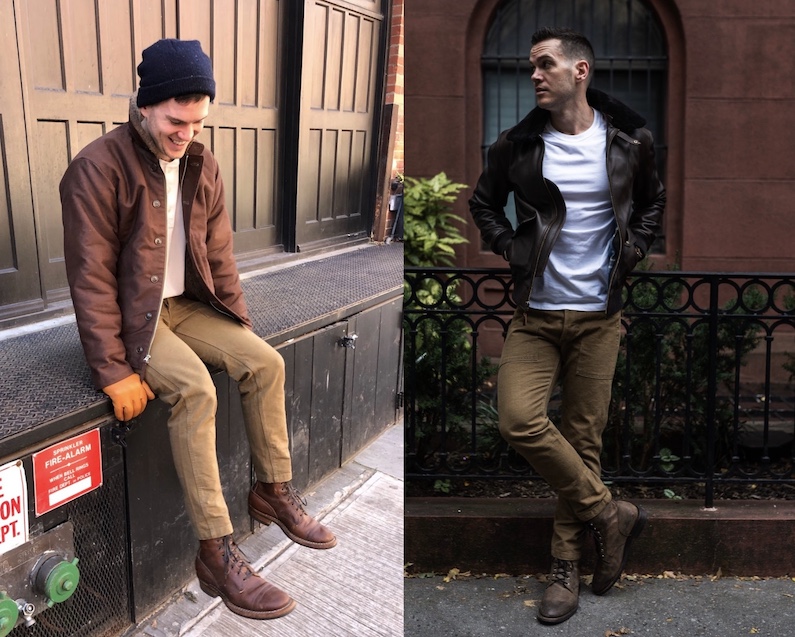
Honorable Mentions
Just so you know that I didn’t just write a list of all the canvas pants I happen to own, here are some canvas pants I’ve tried throughout the years that didn’t quite make the cut.
Tanuki used to sell their Yoroi pants, which translates as “armor,” and they claimed they were 21-ounce canvas. The fit didn’t work for me — the leg opening was a tiny 6.5 inches, and I looked like a carrot in them. Some guys might like the tapered look, but in any case, they haven’t sold them in years. Google “Tanuku Yoroi pants” and you’ll find some places still stocking them.
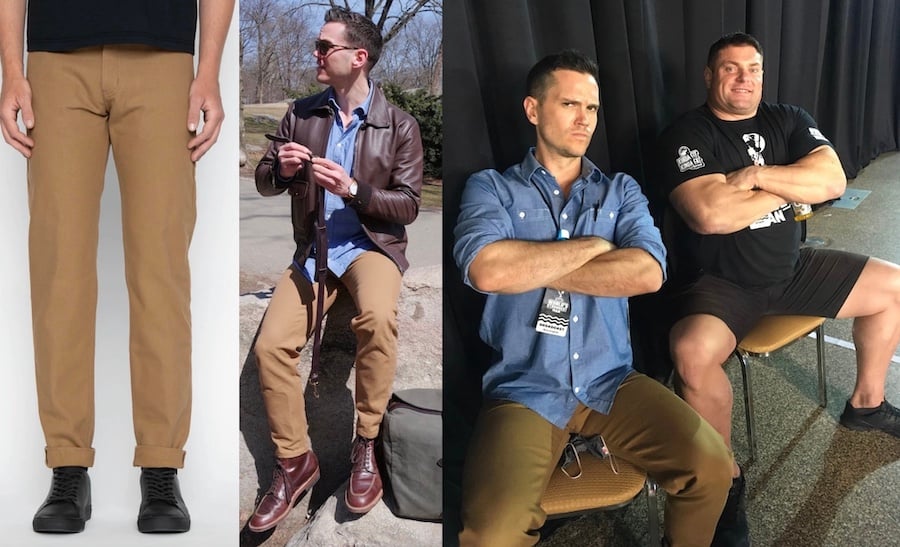
Naked & Famous deserves credit for offering canvas pants in multiple fits. They’re always selling 10-ounce versions in green and tan, but I found the combination of lightweight, light color, and the way canvas tends to bunch instead of drape made them show the shape of my junk a little easily.
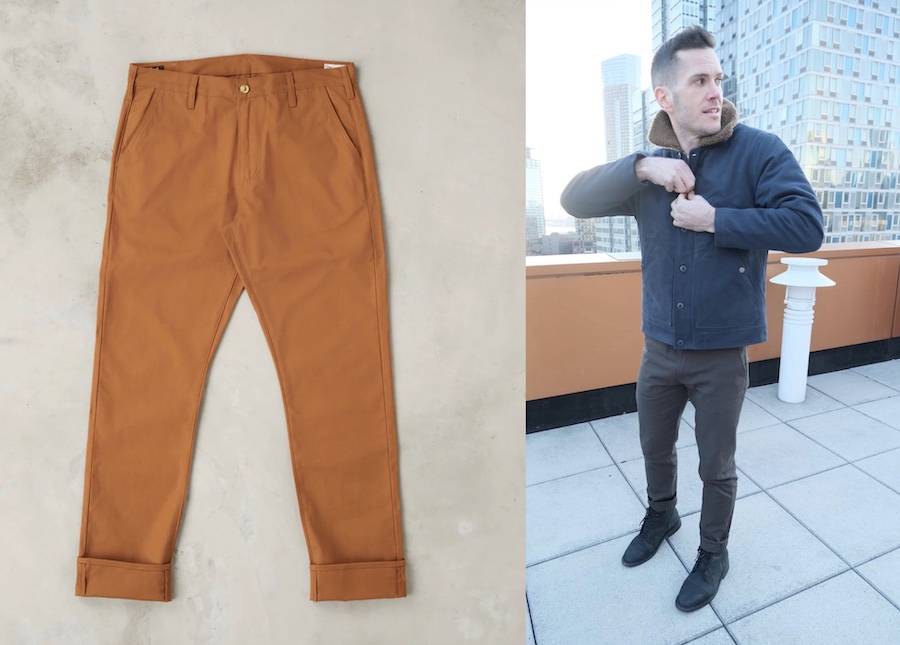
Benzak Denim Developers are good friends of mine and sell their Portugal-made Scout Pants in 9-ounce canvas. They’re excellent, but right now they’re only available in one fit that’s a bit too tapered and low rise for my liking — you might feel differently.
Filson sells a range of different canvas pants that I’ve tried on, and they seem pretty legit, just make sure you don’t get the waxed canvas versions because they won’t breathe for sh*t.

J.Crew sometimes releases canvas pants in colder months, and last year, on Black Friday, they were on sale for like $40. They don’t have many on their site at the time of writing, but check them out when it’s colder.
Iron Heart, lastly, sells the thickest canvas pants I’ve seen at 17 ounces — unsurprising given they’re famous for their 25-ounce denim. They cost over $300, they’re never available in my preferred fit, and canvas that thick will feel like you’re wearing actual iron, but if you’re looking for the heaviest canvas pants around, it’s Iron Heart.
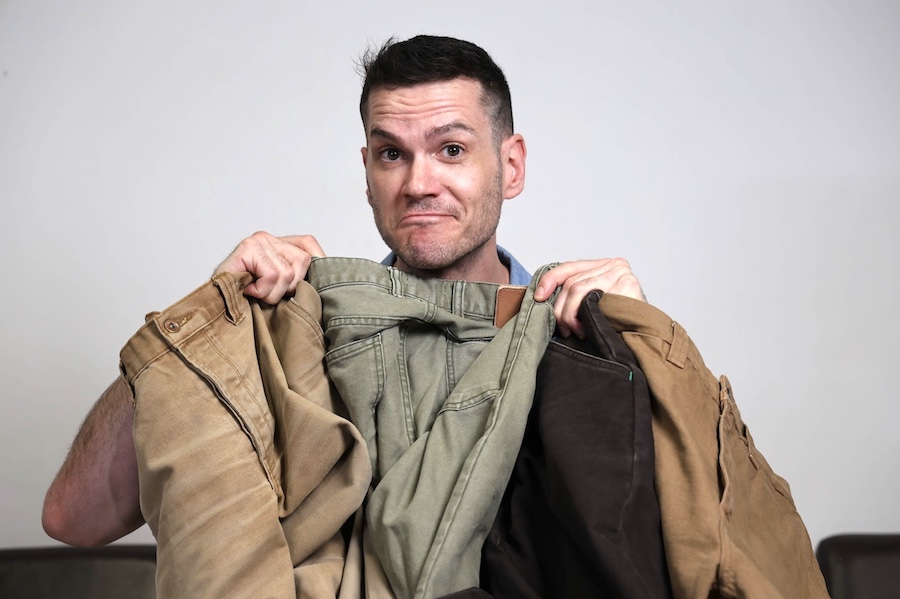
Conclusion
That’s my list of the best canvas pants I’ve worn, plus a few honorable mentions.
To sum up: canvas pants are less common than jeans or chinos because they’re stiffer, less breathable, and less comfortable over time. But they’re also tough, stylish, pair perfectly with denim shirts or jackets, and provide a much-needed alternative to the same old jeans.

